
Anyone Can Whistle is a musical with music and lyrics by Stephen Sondheim, and a book by Arthur Laurents. Described as "a satire on conformity and the insanity of the so-called sane," the show tells a story of an economically depressed town whose corrupt mayor decides to create a fake miracle in order to attract tourists. The phony miracle draws the attention of an emotionally inhibited nurse, a crowd of inmates from a local asylum, and a doctor with secrets of his own.

Florodora is an Edwardian musical comedy. After its long run in London, it became one of the first successful Broadway musicals of the 20th century. The book was written by Jimmy Davis under the pseudonym Owen Hall, the music was by Leslie Stuart with additional songs by Paul Rubens, and the lyrics were by Edward Boyd-Jones, George Arthurs and Rubens.

Harry Bache Smith was a writer, lyricist and composer. The most prolific of all American stage writers, he is said to have written over 300 librettos and more than 6000 lyrics. Some of his best-known works were librettos for the composers Victor Herbert and Reginald De Koven. He also wrote the book or lyrics for several versions of the Ziegfeld Follies.
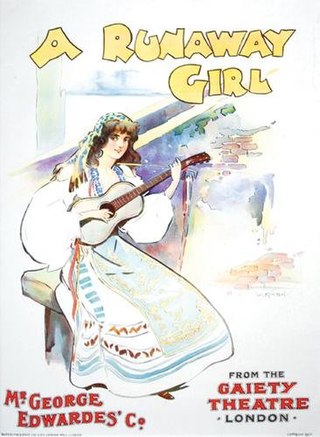
A Runaway Girl is an Edwardian musical comedy in two acts written in 1898 by Seymour Hicks and Harry Nicholls. The composer was Ivan Caryll, with additional music by Lionel Monckton and lyrics by Aubrey Hopwood and Harry Greenbank. It was produced by George Edwardes at the Gaiety Theatre, London, opening on 21 May 1898 and ran for a very successful 593 performances. It starred Hicks's wife, Ellaline Terriss and the comic actor Edmund Payne.

The Toreador is an Edwardian musical comedy in two acts by James T. Tanner and Harry Nicholls, with lyrics by Adrian Ross and Percy Greenbank and music by Ivan Caryll and Lionel Monckton. It opened at the Gaiety Theatre in London, managed by George Edwardes, on 17 June 1901 and ran for an extremely successful 675 performances. It starred Marie Studholme, Gertie Millar, Harry Grattan, Edmund Payne, George Grossmith, Jr. and the young Sidney Bracy. Gabrielle Ray later joined the cast. The show also enjoyed Broadway runs in 1902 and 1904 and toured internationally.

The Shop Girl was an Edwardian musical comedy in two acts written by Henry J. W. Dam, with lyrics by Dam and Adrian Ross and music by Ivan Caryll, and additional numbers by Lionel Monckton and Ross. It premiered at the Gaiety Theatre in London in 1894 and ran for an extremely successful 546 performances. Its cast included Seymour Hicks, George Grossmith, Jr., Arthur Williams, Edmund Payne, and Ellaline Terriss. It soon played in New York and was successfully revived in London in 1920.

The Orchid is an Edwardian musical comedy in two acts with music by Ivan Caryll and Lionel Monckton, a book by James T. Tanner, lyrics by Adrian Ross and Percy Greenbank, and additional numbers by Paul Rubens. The story concerns marital mix-ups and the quest of a wealthy man for a $2,000 Peruvian orchid to be sent to France. When foul play keeps the flower from reaching its destination, it is discovered that a nearly identical orchid is growing in the garden of the horticultural college.

The School Girl is an Edwardian musical comedy, in two acts, composed by Leslie Stuart with a book by Henry Hamilton and Paul M. Potter, and lyrics by Charles H. Taylor and others. It concerns a French school girl from a convent, who goes to Paris to help her lovesick friend. Through mistaken identity, she learns secrets that help her at the Paris stock exchange and ends up at a students' ball in the Latin Quarter. All ends happily.

Edna May Pettie, known on stage as Edna May, was an American actress and singer. A popular postcard beauty, May was famous for her leading roles in Edwardian musical comedies.

Three Little Maids is an English musical by Paul Rubens with additional songs by Percy Greenbank and Howard Talbot. The story concerns three simple curate's daughters who go to London to earn their livings serving tea in a Bond Street tea shop. They become the romantic rivals of three ladies of fashion but succeed because of their freshness.

The Catch of the Season is an Edwardian musical comedy by Seymour Hicks and Cosmo Hamilton, with music by Herbert Haines and Evelyn Baker and lyrics by Charles H. Taylor, based on the fairy tale Cinderella. A debutante is engaged to a young aristocrat but loves a page.

The Girl from Kays is a musical comedy in three acts, with music by Ivan Caryll and book and lyrics by Owen Hall. Additional songs were by Paul Rubens, Howard Talbot, Adrian Ross, Percy Greenbank and others. The farcical story concerns a misguided kiss.

Phyllis McKee Rankin was a Broadway actress and singer from the 1880s to the 1920s.

The Casino Theatre was a Broadway theatre located at 1404 Broadway and West 39th Street in New York City. Built in 1882, it was a leading presenter of mostly musicals and operettas until it closed in 1930.

Edna Goodrich was an American Broadway actress, Florodora girl, author, and media sensation during the early 1900s. At one point, she was known as one of America's wealthiest and best dressed performers. She was married to Edwin Stacey of Cincinnati, Ohio, and later Nat C. Goodwin.
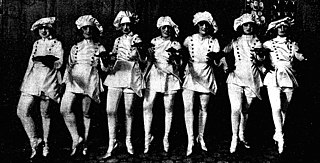
The Whirl of New York is a Broadway musical that premiered at Winter Garden Theatre on June 13, 1921. It was an expanded and substantially re-worked version of The Belle of New York. The show was billed not as a revival but as "founded on The Belle of New York.". The new version had music by Gustave Kerker, Al Goodman and Lew Pollack; book and lyrics by Hugh Morton and Edgar Smith; additional music by Leo Edwards; and additional lyrics by Sidney D Mitchell, Cyrus Wood and Cliff Friend. It opened to favourable reviews and ran for 124 performances.
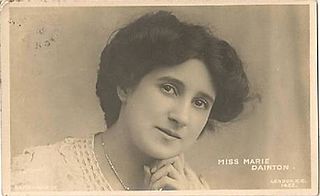
Marie Dainton was an actress of the Victorian and Edwardian eras who appeared regularly in both music halls and in dramatic theatre.
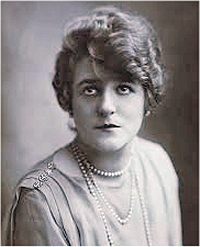
Alice Henriette Lapize, better known by her stage name, Alice Delysia and sometimes Elise Delisia, was a French actress and singer who made her career in English musical theatre. After performing in the chorus at the Moulin Rouge and other theatres in Paris from the age of 14, she became a chorus girl in Edwardian musical comedies, briefly on Broadway in 1905, then in London for several years and back in Paris in 1912.
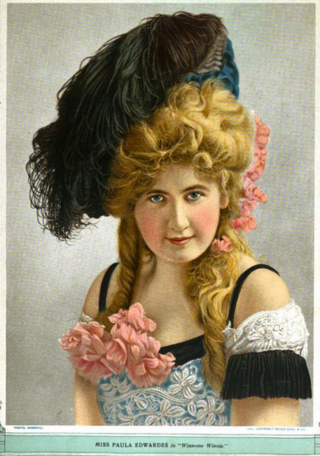
Paula A. Edwardes was an American stage performer in musical comedies and vaudeville.

The Belle of Brittany is an Edwardian musical comedy in two acts set in 'Daffodil Time' in rustic 18th-century Brittany. It premiered at the Queen's Theatre in London on 24 October 1908. The music is by Howard Talbot and Marie Horne, to a book by Leedham Bantock and P. J. Barrow, with lyrics by Percy Greenbank. A Broadway production opened at Daly's Theatre in New York in November 1909 and ran for 72 performances. It featured Josephine Brandell and Margaret Dumont in early roles.
























